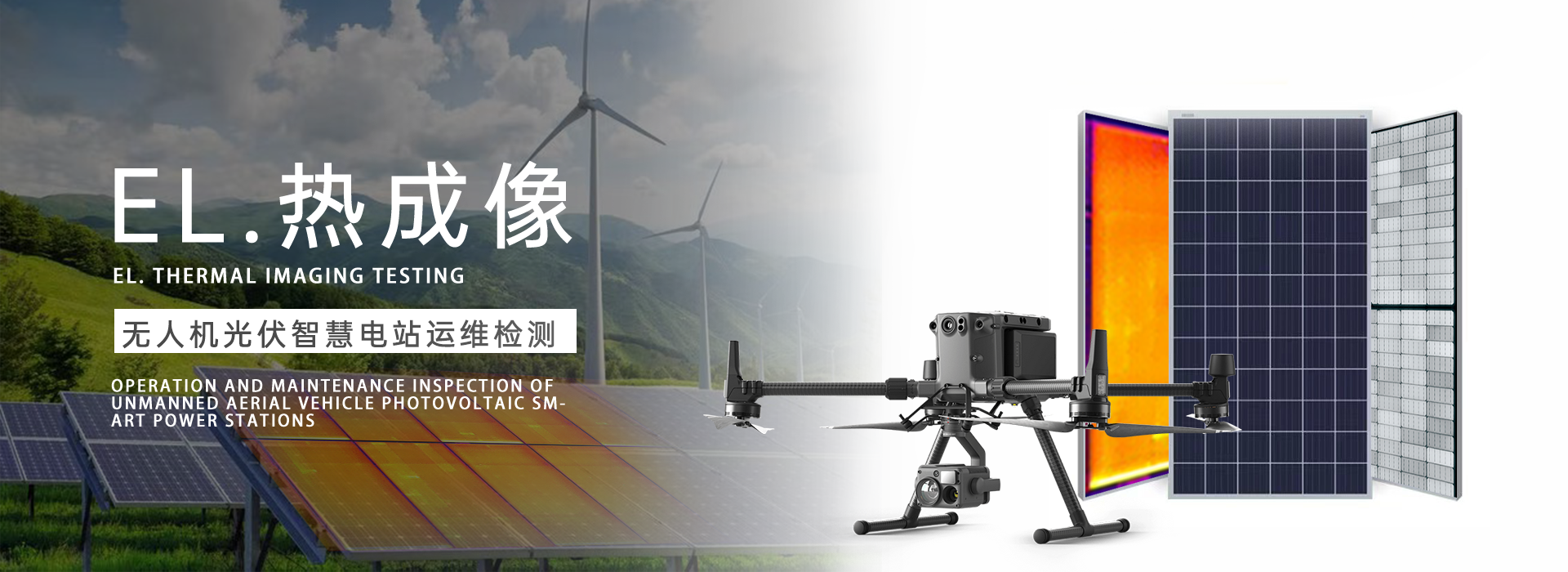Welcome to LAIXL, producing EL testers, IV testers, and drone EL
xinwen
浏览数:121 发布于:2024-12-26
UAV inspection plan for photovoltaic power plants
With the continuous development of technology, drone technology has been widely applied in various fields. In the field of energy, especially in the operation and maintenance management of photovoltaic power plants, drone inspection has become an efficient, safe, and environmentally friendly new inspection method. This article will provide a detailed introduction to a drone inspection scheme for photovoltaic power plants, aiming to improve the operational efficiency and safety of photovoltaic power plants, reduce operation and maintenance costs, and contribute to the development of green energy industry.
The importance of unmanned aerial vehicle inspection in photovoltaic power plants
Photovoltaic power plants cover a wide area and have numerous equipment. The traditional manual inspection method is not only time-consuming and labor-intensive, but also poses certain safety hazards. Drone inspection has the following advantages:
1. Efficiency: Drones can quickly cover large areas, transmit high-definition images in real-time, and facilitate timely detection of equipment failures and hidden dangers.
2. Safety: Drones can conduct inspections at high altitudes, avoiding the risk of personnel working at heights.
3. Environmental Protection: Drones are powered by electricity, do not require fuel, have no emissions, and comply with the concept of green development.
4. Low cost: Unmanned aerial vehicle inspections can reduce labor costs and lower operational expenses.

Design of unmanned aerial vehicle inspection plan for photovoltaic power station
In order to achieve the goal of unmanned aerial vehicle inspection of photovoltaic power plants, we have designed the following plan:
1. UAV selection: Select the appropriate UAV model based on the actual situation of the photovoltaic power station. Mainly considering factors such as the endurance, load capacity, and stability of unmanned aerial vehicles.
2. Inspection route planning: Based on the equipment layout and terrain characteristics of the photovoltaic power station, plan a reasonable inspection route. Ensure that the drone can fully cover all equipment, avoiding repeated inspections and omissions.
3. Inspection task allocation: Reasonably allocate inspection tasks based on the load capacity and battery endurance of the drone. Ensure that the drone can complete all inspection tasks before the battery runs out.
4. Inspection data processing: Process and analyze the image data collected by drones to identify equipment malfunctions and hidden dangers. Evaluate the operational status and potential risks of the equipment by comparing historical data.
5. Inspection report generation: Based on the analysis results of inspection data, generate detailed inspection reports. The report should include information on the location, type, severity, and targeted maintenance recommendations of equipment failures and hazards.
Implementation steps for unmanned aerial vehicle inspection of photovoltaic power plants
1. Preparation: Inspect and maintain the drone to ensure it is in good working condition. At the same time, conduct on-site investigations of the inspection route, familiarize oneself with the terrain characteristics and equipment layout.
2. Inspection implementation: Operate drones to conduct inspections according to the planned inspection route. During the inspection process, pay attention to observing the flight status and battery level of the drone to ensure the smooth completion of the inspection task.
3. Data processing: Process and analyze the image data collected by drones to identify equipment malfunctions and hidden dangers. Evaluate the operational status and potential risks of the equipment by comparing historical data.
 +86 177-0622-2370
+86 177-0622-2370
Address: 4409 Wuzhong Avenue, Suzhou City, Jiangsu Province
Phone: +86 17706222370
Email: el@lailx.com

LINE